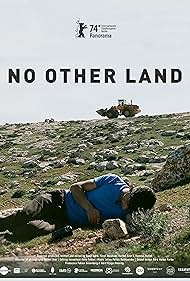Your cart is currently empty!
No Other Land 2024 WEB.HDTV [YTS.MX]
This film by a Palestinian-Israeli collective follows the destruction of the Masafer Yatta in the occupied West Bank by Israeli soldiers and the alliance that develops between Palestinian activist Basel and Israeli journalist Yuval. Placing their relationship at the center of the film is its most intelligent decision, as it portrays a relatable but awkward friendship. The friendship’s attempts to stop the Israeli army from destroying a local school despite it being attacked by soldiers underscores the importance of solidarity. The film combines dangerous phone recordings, beautifully framed village scenes, and historical news footage to create a powerful mix. While some of the discussions feel staged, the emotions expressed feel genuine. This mix provides plenty of time to reflect on the horror depicted, which has only gotten worse since filming. No Other Land is a pivotal documentary that is impossible to watch without connecting with the suffering it depicts—a devastating achievement. The filmmakers deftly navigate the complexity of the subject matter, ensuring that the voices of the affected community resonate throughout the narrative. By focusing on individual stories within the broader context of the conflict, they are able to put a human face on a situation that is often reduced to statistics and headlines. Each character brings a unique perspective, allowing viewers to gain a deeper understanding of the personal impact that geopolitical tensions have on everyday life. In moments of hilarity amidst despair, the film captures the humanity that endures even in dire circumstances. This balance serves as an important reminder of the resilience of the human spirit, showing how laughter, camaraderie and hope can thrive in the face of adversity. The authenticity of these relationships is particularly highlighted in moments of vulnerability, where characters openly share their fears, dreams and desires, in stark contrast to the chaos that surrounds them. Cinematography also plays a crucial role in immersing the audience in the reality of threatened village life. The camera often lingers on the landscape—sunlit fields, bustling markets and the haunting silhouettes of crumbling buildings—evoking a sense of place that is at once beautiful and tragic. These images ground the documentary and provide context for the voices and stories that permeate it. At the same time, the horror film’s music heightens the emotional impact, running through the scenes with a haunting melody that lingers long after the credits roll. It highlights moments of tension and relief, and asks the audience to empathize with the characters rather than simply observe them. This multifaceted approach ensures that No Other Land doesn’t just inform; it turns the audience into witnesses and forces them to confront the harsh realities faced by the people portrayed. Ultimately, “No Other Land” is a poignant call to action, imploring viewers to acknowledge the ongoing struggles of those caught in the crossfire of conflict. It asks the audience to not only show compassion, but also advocate for change, reminding them that awareness is the first step towards solidarity and support. This film is not just a documentary; it is an important part of the conversation about human rights and social justice, and it captivates audiences in a way that resonates long after viewing. As the credits roll, we can’t help but feel a deep responsibility to share the stories that have been bravely revealed and to ensure that the suffering depicted is neither forgotten nor ignored.



 38/38
38/38
Leave a Reply